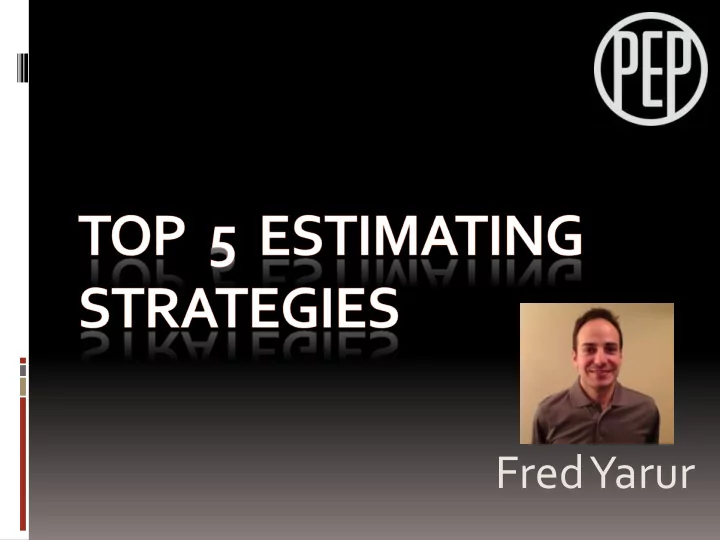

Fred Yarur
“Nothing in the world is worth having or worth doing unless it means effort, pain, difficulty…” -T. Roosevelt
1. 2. 3. 4. 5. Repeat Acquire Estimate Sell Schedule Survey Qualify Produce Refer
2. 1. 3. 4. 5. Repeat Estimate Acquire Sell Schedule Survey Qualify Produce Refer
Estimating is the lifeblood of a successful painting contractor. Preparing an ACCURATE estimate is the most important function that a painting contractor performs.
1. Identify all items and surfaces to be finished 2. Measure and count all items and surfaces 3. Calculate labor cost
4. Calculate material cost 5. Identify additional costs 6. Add overhead 7. Add profit
1. Enhance adhesion 2. Enhance appearance 3. Protect non-painted surfaces
1. Missing items in the scope 2. Improper prep assessment 3. Forgetting to protect surfaces 4. Ignoring factors that affect labor and material
1. Reduce these errors 2. Make them easier to find
Ball park
Ball park
Estimating is using the history of past performance to predict future project costs.
Ball park Market Pricing
Market Pricing
Ball park Market Pricing Fl0or Area
Fl0or Area
Fl0or Area
Ball park Market Pricing Fl0or Area Labor Pricing
Labor Pricing 5 days @ $300 / day = $1500 40 hours @ $50 / hour = $2000
Ball park Market Pricing Fl0or Area Labor Pricing Unit Pricing
Unit Pricing
Unit Pricing
1. Identify all items and surfaces to be finished 2. Measure and count all items and surfaces 3. Calculate labor cost
4. Calculate material cost 5. Identify additional costs 6. Add overhead 7. Add profit
5080 SQFT / 400 SQFT/HR = 12.7 Hours Production Rate: 400 SQFT/HR
5080 SQFT / 325 SQFT/GA = 15.6 Gallons Spread Rate: 325 SQFT/GA
Rental: 2 Days @ $350 / day = $700
13 hours x $20/hr = $260 Example: 80% overhead markup $260 x 1.8 = $468
$468 + $700 rental + 16 gal @ $25/gal = $400 $468 + $700 + $400 = $1568 Example: 20% profit markup $1568 x 1.2 = $1881.60
10 Rules of Estimating
Recommend
More recommend